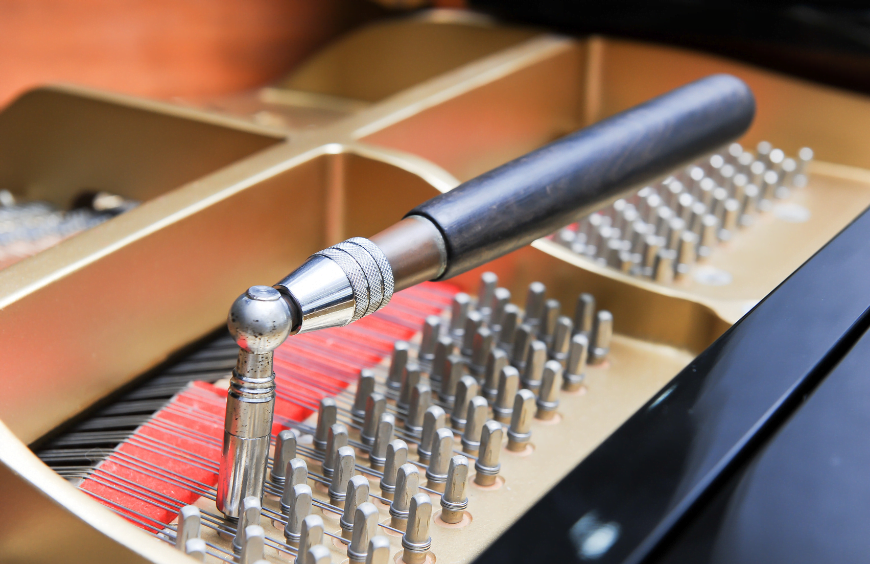No products in the cart.

When performing a pitch raise for a piano that has been out of tune for a long time or hasn’t been tuned in years, several things can occur:
- Initial Tuning: The first step in a pitch raise is to bring all the strings of the piano approximately to the correct pitch. This is typically done by raising the tension of the strings using the tuning pins. As the strings are tightened, they can put stress on the piano’s structure, causing it to settle and potentially affect the stability of the tuning.
- String Tension: Over time, the strings of a piano can lose tension due to changes in temperature, humidity, and mechanical factors. When performing a pitch raise, the sudden increase in string tension can put stress on the piano’s soundboard, bridges, and other structural components. It’s important to monitor the piano’s condition and ensure it can handle the increased tension without any damage.
- Stability: A piano that has been out of tune for an extended period may have undergone significant changes in its internal components. The wooden soundboard, bridges, and other parts of the piano can shift and settle over time, affecting the stability of the tuning. As a result, even after a pitch raise, the piano may require additional tunings and adjustments to achieve and maintain stable pitch.
- String Slippage: In some cases, the strings of an old or neglected piano may have slipped from their proper positions on the tuning pins. During a pitch raise, it is essential to ensure that the strings are properly seated and secure on the pins to avoid further slippage and potential damage to the strings or the piano’s structure.
- Additional Repairs: In extreme cases, a piano that has been neglected for a long time may require additional repairs beyond a pitch raise. This could include replacing broken strings, addressing issues with the action mechanism, regulating the piano’s touch and responsiveness, or even restoring the piano’s overall condition.
It is crucial to note that the process of pitch raising and tuning a severely out-of-tune piano can be complex and time-consuming. It may require the expertise of a professional piano technician who can assess the condition of the instrument and perform the necessary adjustments and repairs to achieve a stable and accurate tuning.
Overall, when performing a pitch raise for a piano that has been out of tune for a long time, it is important to be aware of the potential challenges and to approach the process with care to ensure the best possible outcome for the instrument. When the pitch is lost on a piano, the sound board in a piano comes forward in an upright or up in a grand. This is how they are shaped to being installed into the framework. You might have heard the term “sound board crown“.
Doing the pitch raise in octaves is the best and safest way to add weight to a piano. With an instrument that is more than 30 years old and a full tone flat this is the safest procedure.
- By doing a pitch raise following this procedure, we are putting equal pressure on the entire scale inside the instrument i.e. the bridges, the sound board and the frame are all receiving an equal or almost equal force on the increase.
- Typically we should do two chip tunings, then one pitch raise after one week time, and then a fine-tuning after 2 weeks.
- The two chip tunings can be done in the same day; The pitch raise should be done after one week; Then to play the instrument as much as possible before the fine tuning after two weeks; this allows the wire to stretch and wooden structure to return to their respective positions. This sets the instrument up for another tuning in 90 days. After that a regular schedule for maintenance/ tuning.
If your piano have not tune for long time then then it might need a Pitch Correction.. but if it’s tuned frequently then a regular fine tune is more than enough.

